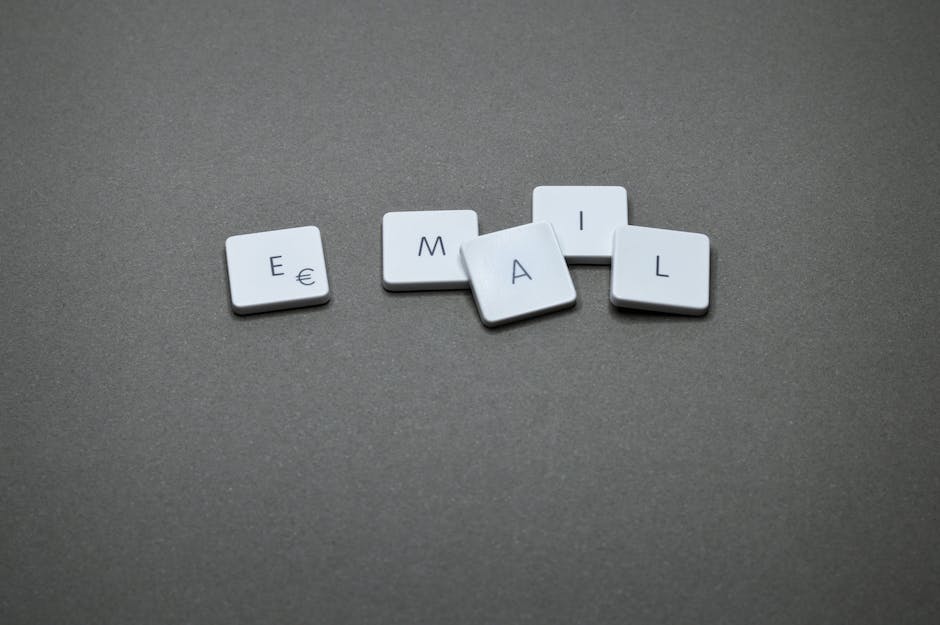Email marketing is a powerful tool for bloggers to build relationships with their readers and increase traffic to their site by delivering engaging and valuable content right into their subscribers’ inboxes. In today’s digital landscape, it’s essential for influencers and content creators to not only understand the mechanics of this fast-evolving marketing strategy but also the best practices and techniques that resonate with their audience. This essay explores the fundamentals of crafting effective email marketing campaigns: from list building and segmentation, to content creation and optimization, various promotional approaches, and measuring success.
Understanding Email Marketing
Email marketing is a powerful digital marketing strategy that involves sending targeted and personalized content to subscribers via email. It enables businesses and bloggers to engage their audience, stay connected, and build lasting relationships. Beyond being a simple communication channel, email marketing has proven to be an effective means to drive traffic to a blog. It provides an opportunity to reach out to your subscribers on a personal level and entice them with valuable insights, interesting information, or promotional offers, ultimately encouraging them to visit your blog to learn or gain more.
Understanding the importance of email marketing in generating blog traffic is crucial for achieving success in this domain. Not only does it help to attract new visitors, but also keeps the existing ones engaged and coming back for more. One of its many benefits is that it allows businesses and bloggers to cultivate their brand identity and establish trust with their audience. Furthermore, it enables them to gain valuable insight into their subscribers, such as their interests, preferences, and behaviors, which can be leveraged to create more targeted and relevant content that appeals to their audience and drives increased blog traffic.
The key to a successful email marketing campaign lies in the careful balance of compelling content and timely delivery. A well-crafted subject line is crucial in capturing your subscribers’ attention and enticing them to open the email—a feat often overlooked. Understanding the type of content that resonates with your audience is imperative to tailoring your strategy to meet their expectations, with emphasis on providing valuable information, being consistent, and adopting a conversational yet professional tone. Additionally, timing is of the essence; knowing the best time to send your emails can enhance the open and click-through rates and ultimately increase the chances of driving traffic to your blog.
The role of automation tools in enhancing email marketing campaigns cannot be overstated. Automation tools allow the implementation of powerful and personalized email marketing strategies with minimal effort and maximum efficiency. They not only assist in segmenting email lists and scheduling the right content at the right time but also monitor key performance indicators such as open and click-through rates. By leveraging data collected through these tools, businesses and bloggers can continuously optimize their email marketing strategies to cater better to their audience’s needs and consequently drive more traffic to their blog.
An effective email marketing strategy has immense potential to increase the reach and influence of your blog, helping you forge stronger connections with readers, share relevant and engaging content, and ultimately entice them to visit your blog for more in-depth knowledge and further interaction. By implementing the key elements of successful email marketing campaigns and utilizing the power of automation tools, you can improve your chances of building an audience, establishing trust, and driving consistent traffic to your blog.

Building Your Email List
One crucial aspect of a successful email marketing strategy lies in building and growing an engaged email subscriber list. Attracting new subscribers may seem challenging, but there are several effective methods you can employ to increase your subscriber base. One popular tactic is using lead magnets, which are incentives provided to potential subscribers in exchange for their email address. Examples of lead magnets might consist of downloadable resources, free trials, or exclusive content. By offering value to your target audience, you encourage them to supply their contact information and join your email list, increasing your ability to connect with them directly.
Another key strategy for list building is providing opt-in forms throughout your blog or website. These forms are a simple way for visitors to subscribe to your email list. To further increase engagement, create user-friendly opt-in forms that include clear calls-to-action and messaging that communicates the benefits of becoming a subscriber. You can place these forms in strategic locations throughout your website, like within blog articles, sidebars, or as exit-intent pop-ups. This increases the likelihood of reaching and capturing more potential subscribers.
Landing pages are another effective tool for encouraging people to join your email list. By designing a dedicated landing page with a clear focus on the benefits of subscribing to your email list, you can drive more targeted traffic and conversion rates. Make sure the landing page is user-friendly, visually appealing, and demonstrates the value of being an email subscriber. You can drive traffic to these landing pages through targeted marketing campaigns, social media, or via your blog.
When growing your email list, it is essential to prioritize quality over quantity. Rather than aiming for a large list of subscribers who are uninterested and unengaged, focus on attracting subscribers who find value in your content and are more likely to interact with your emails. Personalizing your content based on subscribers’ interests is an excellent way to maintain their interest and engagement over time. Segment your list to send tailored content to specific groups based on their preferences, ensuring relevance and increased open rates.
One essential aspect of effective email marketing strategies is continuously analyzing and optimizing your approach to drive more traffic to your blog. By regularly reviewing key performance metrics, such as open rates, click-through rates, and conversion rates, you can determine the effectiveness of your current tactics and identify areas for improvement. Conducting experiments and making adjustments based on data and feedback will help you cultivate a more engaged and loyal subscriber base, ultimately resulting in better business outcomes.

Segmentation and Personalization
To boost engagement and encourage more blog visits, implementing segmentation and personalization in your email marketing is vital. These strategies involve delivering tailored content to subscribers, which can lead to higher click-through rates.
Audience segmentation is the process of dividing your subscribers into smaller groups or segments based on specific criteria, such as demographics, interests, or purchasing behavior. By categorizing your audience into these targeted groups, you can cater more effectively to their preferences, ultimately driving increased blog traffic. Personalization further enhances this approach by customizing email content to each subscriber’s unique interests and characteristics, creating a more meaningful connection and encouraging them to visit your blog.
Personalization in email marketing goes hand in hand with segmentation. It involves customizing email content for each recipient based on the data collected about their preferences and behavior. By taking advantage of this information, marketers can craft relevant and meaningful messages that resonate with subscribers on a more personal level. This technique not only garners trust with subscribers but also influences higher open and click-through rates. Incorporating personalization elements, such as addressing recipients by their first name or tailoring the subject line, has proven to improve overall email performance.
To develop and implement personalized campaigns effectively, marketers must first establish a comprehensive understanding of their audience by gathering data. This can be achieved through various methods, such as surveys, tracking user behavior on the blog, or utilizing third-party tools that provide valuable insights. Once sufficient data is collected, marketers can begin segmenting their audience based on the criteria most relevant to the blog’s content or promotions.
Utilizing email marketing tools and automation platforms can significantly streamline the process of deploying segmented and personalized campaigns. These platforms often provide features for managing subscriber lists, segmenting audiences, setting up customized email templates, and tracking campaign performance. By leveraging these tools, marketers can effectively tailor the email content to their segmented audience and monitor the performance metrics for continual optimization.
Effective email marketing strategies for blog traffic involve segmentation, personalization, and data-driven insights. By understanding and targeting the preferences of each subscriber, you can create meaningful connections that inspire engagement. These targeted efforts, combined with the right marketing tools, can help improve open and click-through rates, ultimately driving more visitors to your blog and fostering loyalty among your readers.

Crafting Compelling Content
Successful email marketing strategies for driving blog traffic rely heavily on crafting compelling content that connects with your target audience. By selecting relevant topics that address your readers’ interests and pain points, you can provide valuable solutions that truly make a difference. Producing content that offers exceptional value and insight helps establish a meaningful connection with your readers, encouraging them to visit your blog and share your content with others.
Along with engaging content, writing effective subject lines plays an essential role in email marketing efforts to increase blog traffic. Subject lines should pique your reader’s curiosity while accurately describing the content inside. You can create attention-grabbing subject lines by igniting curiosity, highlighting a specific benefit, or conveying a sense of urgency. Using personalization to directly address your readers can give your emails a custom, tailored feel that is relevant to their interests. Conducting A/B testing on different subject lines will allow you to determine which style garners the best response and promotes higher open and click-through rates.

Best Practices for Email Design
As you endeavor to create impactful email designs that captivate and retain your audience’s attention, concise formatting is essential. Simple, scannable headers, bullet points, and short paragraphs make it simple for your readers to digest the content, all while catering to busy subscribers who may only have a few seconds to skim your email. Incorporating these best practices for email design can help you effectively communicate your message while enticing recipients to click through and visit your blog.
In conclusion, optimizing the structure and design of your emails while consistently maintaining effective subject lines and engaging content will significantly impact the performance of your email marketing strategy in driving blog traffic. Be sure to test various factors such as design, content relevance, and sending times to fine-tune your approach for optimal results. By keeping these essential elements in mind, you’ll have a successful email marketing strategy that drives traffic to your blog and fosters a loyal audience.
Another essential aspect of email design is choosing the appropriate layout. A visually appealing layout arranged in a logical and neat manner pulls in readers and encourages further engagement. Utilizing columns efficiently is an effective way to segment your content while keeping it organized and easy to navigate. Implementing visual hierarchy with the help of images, bold text, and distinct call-to-action (CTA) buttons can guide your readers’ eyes through the content and prompt them to click and visit your blog. A successful layout should be strategic in directing subscribers’ attention to the most crucial elements of your email while providing clear pathways to your blog.
Creating mobile-responsive email designs is also critical in today’s increasingly on-the-go world. Considering that a significant portion of users tend to check their mails on their mobile devices, configuring your emails to cater to various screen sizes without compromising content visibility is key in retaining subscribers. Mobile-responsive email templates automatically adjust the email’s layout and elements to fit the screen where it is opened, providing a consistent user experience across devices. Neglecting mobile-responsiveness could potentially drive away readers before they even have a chance to engage with your content or visit your blog.
Including personalized content in your email designs contributes to an individualized and unique experience for your subscribers, thus resonating deeply and increasing the likelihood of driving traffic to your blog. Personalization can be as simple as addressing the recipient by their first name or as complex as tailoring the email content according to their interests and preferences. Utilizing subscriber data to deliver relevant and poignant messages can significantly boost open rates and CTA clickthrough, subsequently directing more users to your blog.
Incorporating social sharing buttons and social media icons in your email design allows users to easily share your content with their network and follow your blog on various platforms. This not only expands your reach but also increases the probability of generating more traffic and attracting new subscribers. Social channels can serve as a powerful catalyst for your blog’s growth if you can seamlessly integrate them within your email marketing efforts. Your email design should effectively promote your blog and encourage subscribers to connect with you, driving traffic and fostering long-term relationships with your audience.

Testing and Optimization
In the competitive landscape of digital marketing, creating an effective email marketing strategy is crucial for driving blog traffic. A key success factor for these strategies is the implementation of A/B testing and optimization. A/B testing involves running two different variations (A and B) of an email campaign to see which one performs better over a defined period. This approach enables marketers to make data-driven decisions by analyzing performance metrics and comparing the results of different email variations. Continuously optimizing your email campaigns through A/B testing will help you maximize your blog traffic and ensure your marketing efforts are as effective as possible.
Performance metrics can include open rates, click-through rates, conversion rates, or any other indicator that reflects the effectiveness of an email marketing campaign. By evaluating these metrics and understanding which variation resonates better with your target audience, you’ll be better equipped to make strategic optimizations to your existing campaigns and subsequent ones. You can test elements such as subject lines, email layouts, call-to-action buttons, images, and personalization to determine which combination garners the best results and drives more traffic to your blog.
Furthermore, A/B testing and optimization go beyond just comparing two variables. To fully optimize your email marketing efforts, consider running multivariate tests. These tests involve multiple variables being changed at once, allowing marketers to collect and analyze data for better optimization of their email marketing strategies. Multivariate testing is essential for revealing deeper insights and understanding which combination of specific elements works best for driving blog traffic.
Another important aspect of testing in email marketing is to maintain consistency in your testing methods. This means running tests on a regular basis and controlling variables, such as sending time, email format, and audience demographics. Maintaining a consistent approach helps ensure the validity of your results and provides a reliable foundation for making data-driven decisions. It also puts you in a better position to understand fluctuations in your performance metrics and to be proactive with optimization efforts, leading to more effective strategies and sustainable growth in blog traffic.
When it comes to email marketing strategies for driving blog traffic, A/B testing and optimization are crucial components. By conducting tests, analyzing performance metrics, and making data-driven decisions, you can create and refine strategies that resonate with your target audience. Embracing a consistent approach to testing, along with continuous improvement is key for maintaining the effectiveness of your email marketing campaigns, and ultimately leads to increased blog traffic.

Promoting Blog Posts Through Email
One such email marketing strategy that benefits greatly from constant optimization is sending out regular newsletters. Newsletters keep your subscribers informed about the latest news, updates, and blog content, ensuring they remain engaged and visit your blog for new articles. When designing your newsletter, include a mix of fresh blog posts, evergreen content, and relevant industry news, providing value to your subscribers and maintaining their interest.
For even better results, personalize your content and tailor your newsletters based on reader preferences, further boosting your blog traffic and solidifying the effectiveness of your email marketing efforts.
Dedicated emails are another email marketing strategy that can help increase blog traffic. Unlike newsletters, dedicated emails focus on promoting a specific blog post or piece of content. By sending an email tailored to the content, you can create a sense of urgency and excitement for your subscribers, which may result in higher click-through rates and traffic to your blog. Make sure to craft an enticing subject line and preview text to capture the attention of your subscribers and provide a clear call-to-action (CTA) for them to read your blog post.
Series campaigns are also an essential part of email marketing strategies for blog traffic. They involve sending a sequence of emails, typically focused on a central theme or topic, that are designed to build anticipation and engagement over time. Once you have identified a topical theme or series relevant to your audience, create a sequence of emails that progressively reveal more information, culminating in the release of a final, comprehensive blog post. This strategy keeps your subscribers engaged and eager to receive more content, driving traffic to your blog as a result.
Creating a sense of urgency in your emails can substantially increase engagement, leading to more traffic for your blog. One approach to achieving this is by including limited-time offers or exclusive content related to your blog posts. For example, you can give early access to a new blog post to a select group of subscribers or offer a time-sensitive bonus resource for immediate engagements (e.g., first 50 visitors receive a free eBook, templates, etc.). This will encourage your subscribers to act quickly, resulting in higher click-through rates and increased blog traffic.
Segmentation is a vital strategy in optimizing the effectiveness of your email marketing campaigns for increased blog traffic. By dividing your email list into different segments based on factors such as reader interests, geography, and engagement level, you can create targeted and relevant emails for each group. This tailored content ensures that the appropriate message reaches the right audience, increasing the likelihood that they will engage with your email and visit your blog. Through continuous testing and refining of your segmentation tactics, you can enhance your email marketing efficiency and drive even more traffic to your blog.

Measuring Email Campaign Success
As you implement email marketing strategies to boost blog traffic, it is essential to assess the success of your campaigns by monitoring key performance indicators (KPIs). Critical KPIs to track include open rates, click-through rates, conversion rates, and unsubscribe rates. These metrics not only offer insights into the efficacy of your email content but also help gauge how well your campaigns resonate with your target audience, ultimately contributing to increased blog traffic. By analyzing these KPIs, you can make data-driven adjustments to your email marketing efforts and create seamless, engaging experiences for your subscribers.
Open rates are an initial indicator of how well your subject lines capture the attention of your subscribers, encouraging them to engage with your content. Although a high open rate may not directly translate to increased blog traffic, it is a necessary starting point to ensure your audience is at least viewing your email. On the other hand, click-through rates signify the percentage of subscribers who click on the links within your emails, potentially leading them to your blog. Monitoring this metric is vital as it helps determine the relevance and value of your content to your subscribers.
Conversion rates measure the percentage of recipients who complete the desired action after clicking through your email, such as subscribing to your blog or downloading a content upgrade. This KPI directly correlates to the success of your email marketing campaigns and can be a strong indicator of your influence in driving blog traffic. Comparing conversion rates to your click-through rates can help pinpoint areas where improvements can be made, such as optimizing landing pages or email content.
Unsubscribe rates, while often viewed with concern, can also provide valuable insights into your email campaigns. A higher-than-average rate may indicate that your content is not resonating well with your audience or that the frequency of your emails is too high. By understanding the reasons behind unsubscribes, you can make adjustments to your email marketing strategy that better align with your audience’s interests and preferences.
In addition to these KPIs, analyzing and interpreting your results plays an essential role in optimizing your email marketing campaigns. Regularly reviewing your metrics and applying data-driven insights allows you to identify which types of content, subject lines, or email formats are generating the most engagement and ultimately driving the most traffic to your blog. By continuously iterating your email marketing strategies based on your findings, you will ensure that your campaigns remain effective in generating blog traffic and delivering valuable content to your audience.

Ultimately, creating and maintaining a successful email marketing strategy requires a thorough understanding of its various components, constant testing and optimization, and a clear focus on delivering value to subscribers. By harnessing the power of email marketing within your blogging toolbox, you can foster stronger connections with readers, drive more traffic to your content, and establish an authoritative online presence in your niche. Keep adapting to market trends, learning from relevant data, and refining your approach, and you will consistently see positive results and a significant boost in your blog’s success.

